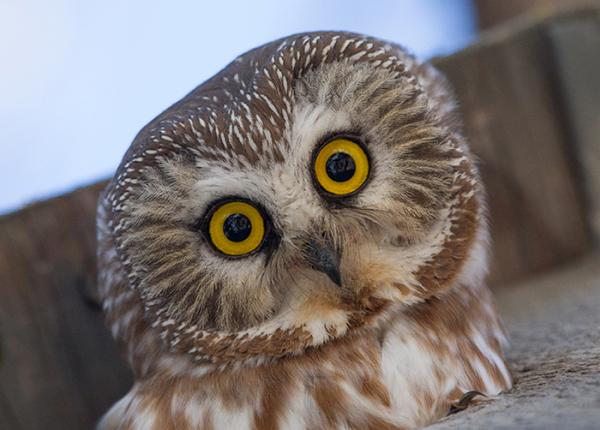
From Blackland Prairie Raptor Center
A HUGE thank you to Dr. Kevin S. Donnelly and Dr. Sarah Brattain at Veterinary Eye Institute for examining our burrowing owl patient, 25-0080! These incredible specialists enhance our success in patient releases and provide us with a deeper understanding of eye trauma and treatment plans!


A quick search turns up results for dilating eyes during a vet visit, so it’s definitely possible.
You inspired me to dive a little deeper into this, and it was very educational!
I found this video where a parrot gets a similar eye exam and the doctor discussed things with the bird’s owner.
The first gave the bird midazolam, which makes it drowsy, and it also has a memory loss effect to minimize any kind of trauma from the procedure.
The machine the lady is holding is called a portable slit lamp, which is pretty much a microscope with a bright light that lets the doctor get a good look at the eye both externally and internally.
They also tested the pressure on the eye called a tonometer.
They did give the bird some type of eye drops for something, but I’m guessing it was lubrication, not dilation, for reasons I’ll get into.
The small device the male doctor in my post is holding is basically a magnifying glass, though I couldn’t find if it had a special name. It’s used for quick spot checking. The doctor in the parrot video was making quick looks at areas of the eyes developing cataracts.
The parrot doctor said he recommended against treating its cataracts, because it wasn’t causing any pain, and the drugs needed to dilate a bird’s eyes are dangerous to use. Bird eyes have their voluntary dilation/constriction ability because unlike mammalian eyes, which are controlled by smooth muscle, which operates involuntarily, bird eyes are controlled by skeletal muscle. This is the same type of muscle used to flex their chest to breathe, so anything that would relax the muscles controlling the eyes would relax those muscles as well, creating a dangerous situation.
The parrot did not seem to drastically change its pupil size during the exam, I’m guessing from being sedated, so it did not seem necessary, though he did move into a darker room at one point.
The wiki on bird vision says this was a feature from their sauropsid ancestors. Very interesting stuff in that wiki too!
Oh interesting. I would not have expected their eyes and lungs to be controlled by the same muscle.
I don’t believe it is the same muscle, just the same type of muscle. The video and a few other comments I read just made it sound like whatever medicine would relax the eye muscles would also affect critical muscles in other parts of the body.
This is all new info to me too, so don’t take my word as 100% accurate on this particular matter, and even the doctor in the video is probably oversimplifying it for the lady.